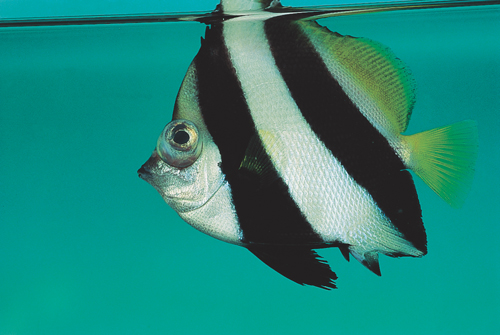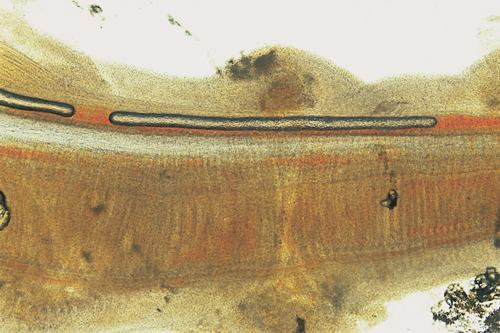Difference between revisions of "Ornamental Fish Q&A 22"
| (One intermediate revision by one other user not shown) | |||
| Line 1: | Line 1: | ||
| + | {{Manson | ||
| + | |book = Ornamental Fish Q&A}} | ||
| + | |||
[[File:Ornamental Fish 22a.jpg|centre|500px]] | [[File:Ornamental Fish 22a.jpg|centre|500px]] | ||
<br> | <br> | ||
| Line 33: | Line 36: | ||
|a4= | |a4= | ||
Ammonia toxicity, ocular parasites, septicemia, and neoplasia. | Ammonia toxicity, ocular parasites, septicemia, and neoplasia. | ||
| − | |l4= | + | |l4= Exopthalmos - Fish#Introduction |
</FlashCard> | </FlashCard> | ||
Latest revision as of 14:59, 22 November 2011
| This question was provided by Manson Publishing as part of the OVAL Project. See more Ornamental Fish Q&A. |
This Moorish idol is markedly exophthalmic and on close inspection a large air bubble can be seen behind the globe.
| Question | Answer | Article | |
| What is this condition called? | Supersaturation or gas-bubble disease. |
Link to Article | |
| How does this problem develop? | The most common cause of this problem is a cavitating pump which literally supersaturates the water with atmospheric air (meaning the majority of the gas will be nitrogen). Excessive oxygen production by algae and other plants is a less frequent cause. Over-aerating an aquarium with air bubbles from an air stone can, but rarely does, lead to supersaturation disease. |
Link to Article | |
| How is this condition treated? | Treatment usually involves finding the source of the excessive gas and eliminating it. In the case of a cavitating pump, filling the sump or reservoir or locating a leak in the system usually solves the problem. Air bubbles under the skin and within the fins will usually resolve within a day or two. Air bubbles in the circulatory system, especially in the branchial vasculature, can be acutely fatal. |
Link to Article | |
| List four other general causes of exophthalmia in fish. | Ammonia toxicity, ocular parasites, septicemia, and neoplasia. |
Link to Article | |

